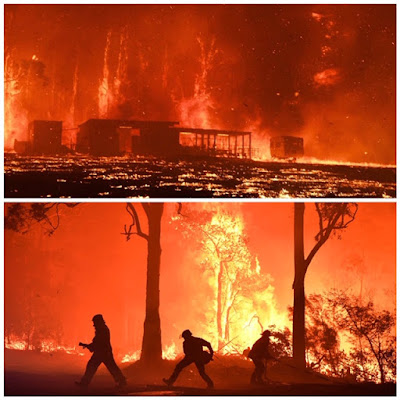It became obvious to him that there was more to this entertainment phenomenon than one day could ever cover.
So for the following year,Wertheimer photographed Elvis's daily life among fans, friends and family at home, at performances and in the recording studio.
This book contains a host of wonderful pictures of 'The King' with accompanying text.
For me, it's the Elvis I like to remember.
A must for the Elvis fan.
Thanks to Kay for giving me this book during our last visit to the USA.
And in a serendipity moment, prints of the original pictures contained in the book were put on display at the National Portrait Gallery in our nation's capital, Canberra, soon after our return home.

The Mexican-American War is another war that changed the shape of the USA forever.
Written by John S. D. Eisenhower (1922-2013), son of the former USA president, "So Far from God" includes a detailed history of the lead up to The Mexican War backgrounding Texas Independence and its ultimate annexation as an American state.
President Polk's continuing expansionist policies ie. California, and Mexico's active interest in reclaiming Texas ultimately lead to war.
The book details the major battles, international diplomacy and the internal politics of both USA and Mexico at the time. It also provides detailed portraits of the major players including James Polk, Zachary Taylor, Winfield Scott, John Fremont and, of course, the always fascinating General Antonio Lopez Santa Anna.
In defeat Mexico was forced, under the 1848 Treaty of Guadalupe Hildago, to give up a huge tract of land (more than half its territory) which would eventually become California, Nevada, New Mexico, Arizona, Utah, and parts of Wyoming and Colorado. As well it had to recognize the annexation of Texas and accept the Rio Grande as the border.
"Manifest Destiny was not Polk's invention, but he was its ideal agent." says Eisenhower.
Of course it didn't end there for the USA. Would the new territories be slave or free?
But that's another story.
I found it an easy read and not what could have easily been a 'dry' historical account.
When one thinks of the American Civil War, naval battles don't immediately come to mind.
But the war at sea and in the rivers eg. First Battle of Memphis (1862), saw the use of paddle driven river boats, steam warships, ram ships, sloops and cruisers.
And for the first time in any naval conflict iron clads, submarines and torpedoes appeared.
"Ships of the Civil War" is beautifully illustrated with over 120 fighting ships of the era together with their specifications and descriptive background text. One for the Civil War buff but also for those who love old ships.
Thanks again to Kay for finding this and passing it on.
Bacardi - The Long Fight is a history of the famous rum company but it is also a history of Cuba.
The two are inextricably linked.
The Bacardi company was founded in Santiago de Cuba by Facundo Bacardi Massó, the Spanish-born son of an illiterate bricklayer in 1862. But it was his three sons, especially the eldest, Emilio, who began to build the enterprise into what it is today.
The Bacardi family has held fast to its Cuban identity for five generations even in exile from the country.
From the fight for Cuban independence from Spain in the 1860s, through the American occupation to the rise of Fidel Castro, there is no chapter in Cuban history in which the Bacardis have not played a part.
A captivating story, both historically and corporately, which is well written and entertaining.
In 1876 Lars Stavig, his wife and three children arrived in Western Minnesota as part of a major wave of immigrants to the USA from Norway. Life in Norway at the time was very tough with a doubling of population in the century before putting pressure on the limited agricultural livelihoods with only 25% of the country's land being cultivatable.
Landless farmers saw great opportunities in the New World and were a major component of the 815,000 Norwegians who migrated there between 1820 and 1920.
Lars Stavig left his mother and brother, Knut, in Norway never to see them again.
"Dear Unforgettable Brother" contains correspondence between the two brothers (and other family members) over five decades.
It is an insight into the lives of the Norwegians making a new life for themselves in Dakota Territory, near today's Sisseton SD, as well as those who stayed behind.
It also contains two essays on Norwegian life and society of the time and reasons behind the mass immigration as historical background.
For me, a wonderful read.
South Dakota Public Broadcasting (SDPB) have also made a documentary based on this book.
It is well worth watching.































